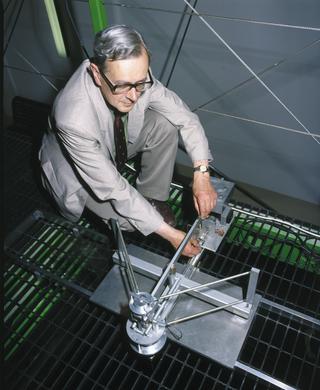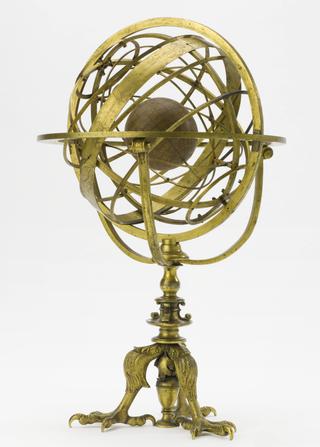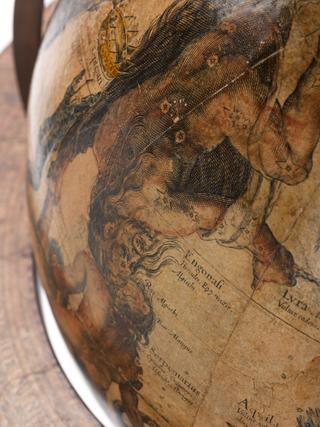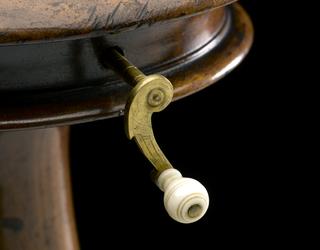
Ebony octant on pillar stand with artificial horizon.
- Made:
- 1750-1760 in Fleet Street
- maker:
- Benjamin Martin






















Octant with artificial horizon made by Benjamin Martin, London, 1750-1760. Ebony frame, limb and index arm, the lower part of the arm is of brass; brass fittings and a brass stop for the index arm; an inlaid ivory plate on the crossbar. Signed on the brass section of the index arm: B. Martin Invent London. Inlaid ivory scale from -5° to 95° every 20', measuring to 89°. Ivory vernier to 1', zero at the centre. There is no tangent screw or clamping screw; a brass pressure plate on the back of the index arm holds the arm in place on the limb. Two socket shades (both red). Index-glass adjustment by screw; adjustment of the horizon glass by screws, and by levers, wing nuts and milled clamping screws. The sight vane has two pinholes and a swivelling shutter, it has an ivory lining on the objective side; the back sight vane has one pinhole.
When using the artificial horizon, the octant is mounted by a ball and socket and a wing nut (broken) on a mahogany column with three feet, that are mounted on a second set of three feet with three milled levelling screws. The column can rotate the octant and has a brass indicator arm that moves over a circular silvered brass scale, divided 0°-360° every 1°. There is a compass at the centre of the levelling feet , the paper card is divided in four quadrants of 90° every 1°; a silver scale is divided in the same way, whereby the zeros of the two scales differ by 90°. By the wing nut connection between the octant and the stand, the octant can be placed in a horizontal and in a vertical position. The plumb-line to position the octant vertically, is missing. No box.
Details
- Category:
- Astronomy
- Object Number:
- 1937-118
- Measurements:
-
overall (estimate): 780 mm x 460 mm x 460 mm, 5kg
- type:
- octant and artificial horizon - glass
- credit:
- Stevens's Auction Rooms Ltd.




